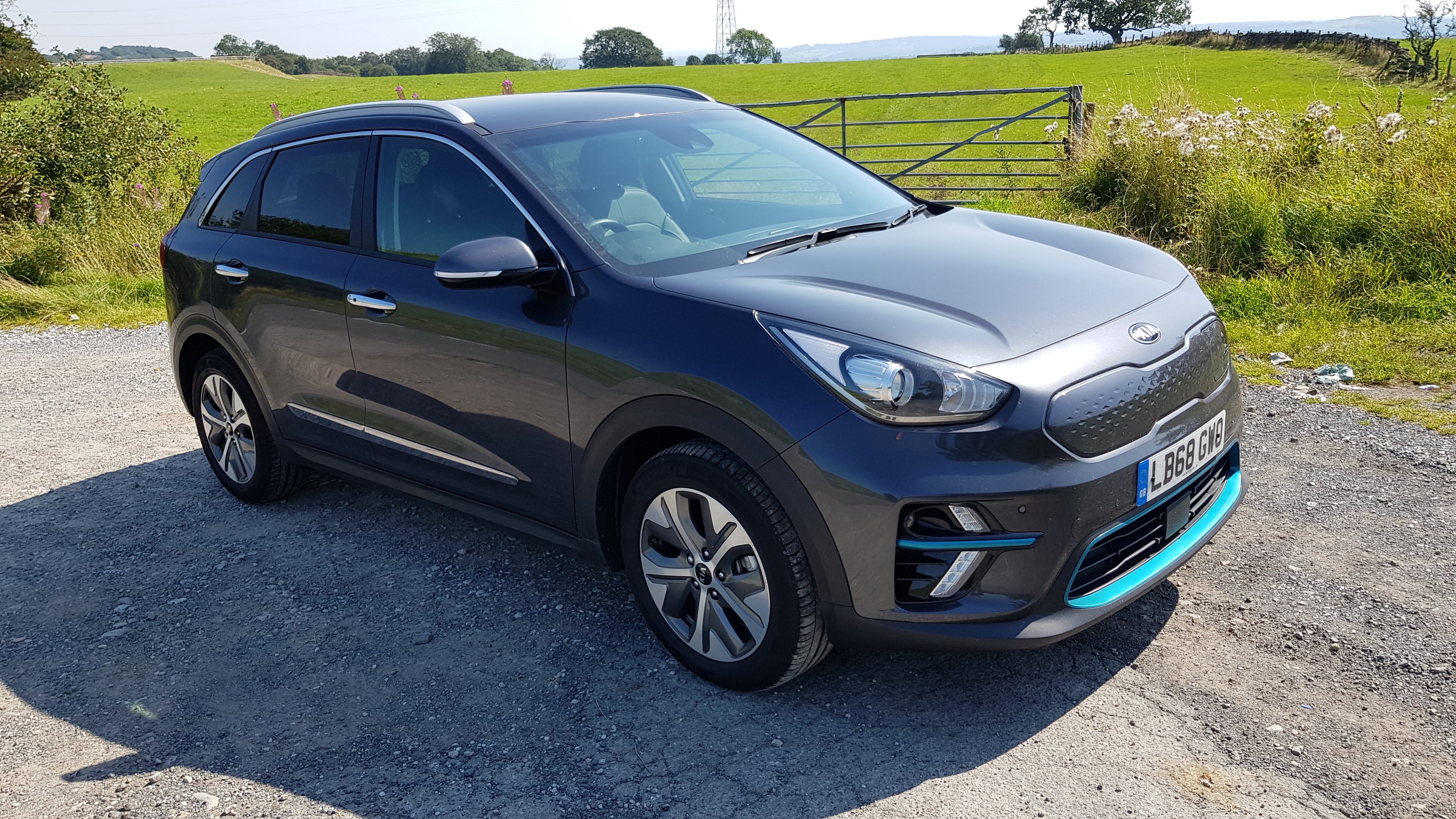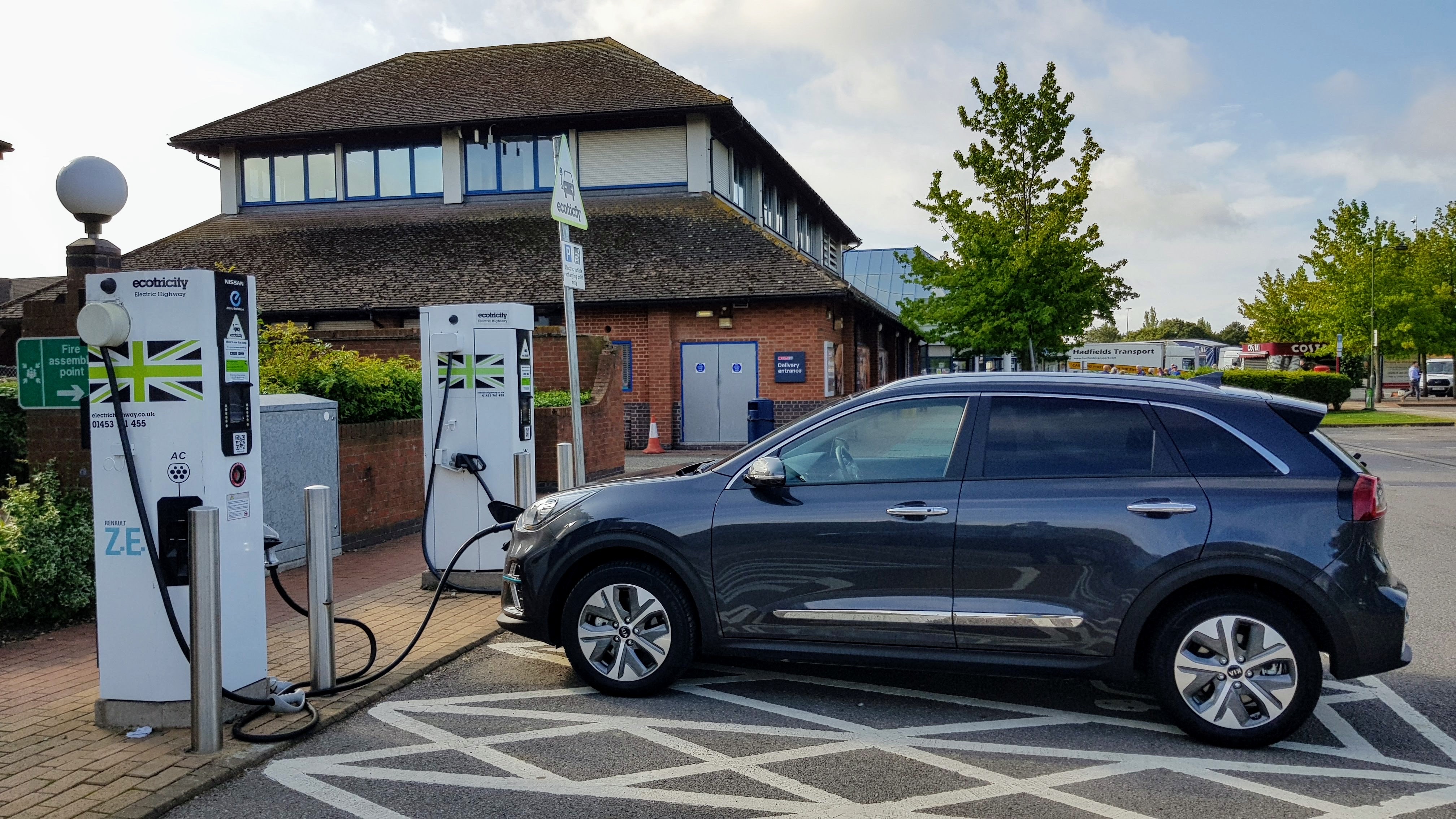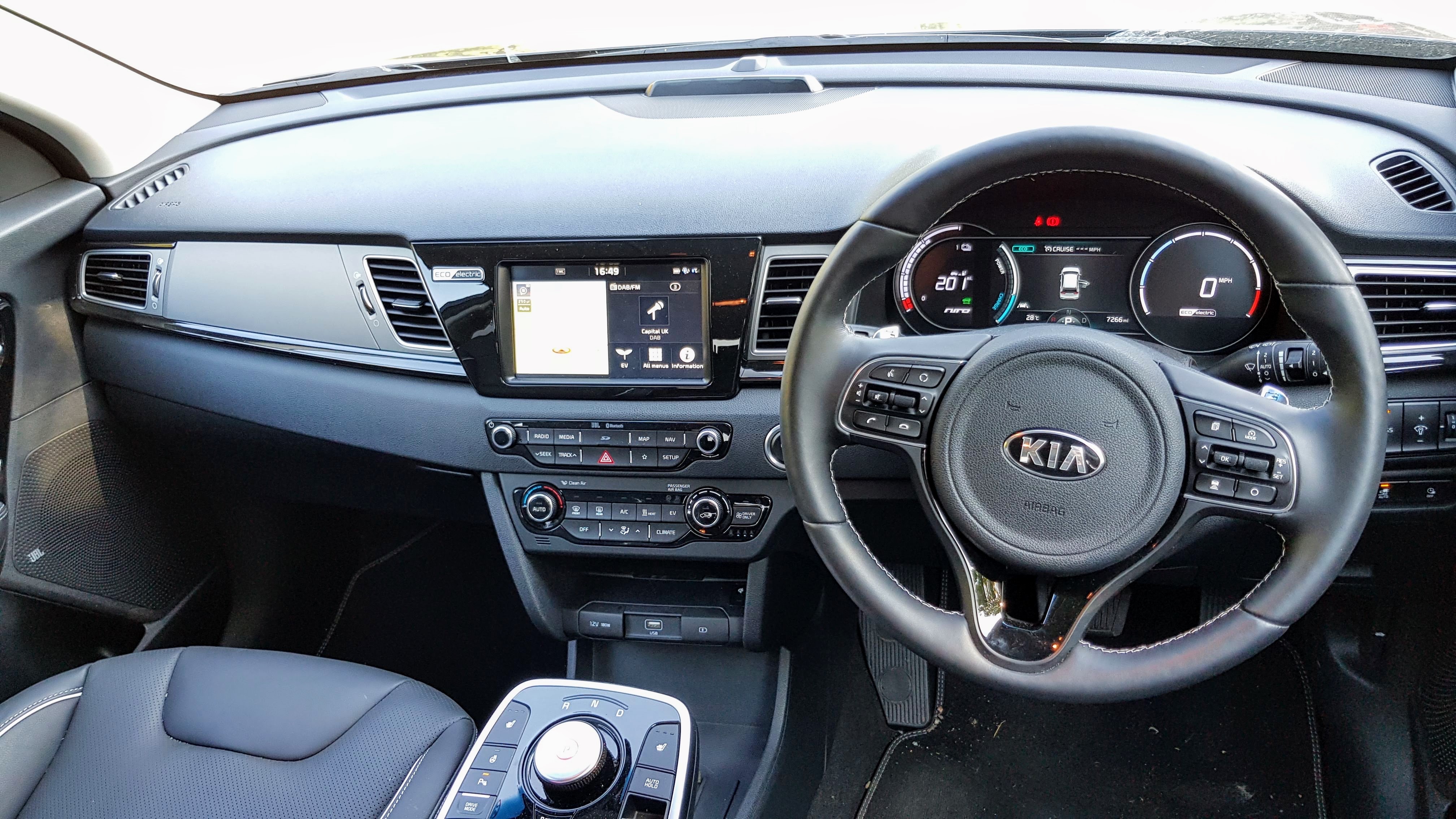It’s not often a car comes along that truly polarizes opinion, a car that in many ways presents itself as being familiar in form and function and yet forward thinking, presenting something all together new and exciting. and you get the feeling that Kia already know this and are well aware of the significance of their very clever e-Niro in pointing towards the immediate future of personal and private transport.
But let us not get ahead of ourselves here as this is not a review of the e-Niro just yet, rather a rumination regarding the practicality of Electric Vehicle travel right here and right now and thoughts as to whether the upgrade? is current(sic)ly worth looking into for the vast majority of ordinary motorists.

Fortunately, when the e-Niro arrived over at MotorMartin Towers it coincided with a necessary round-trip from Bradford, West Yorkshire to Saundersfoot way down in Pembrokeshire, South Wales, a journey which Google assured me would be of approximately 241 miles and take just 4 hours and 54 minutes each way. Lovely.
Now we all know that using an Electric Vehicle for a journey such as this is going to take a little more planning than just slinging a couple of cold pies and cans of pop into the boot for the required sustenance after all, charging the battery is going to become an issue at some point during the day. A quick look at Ecotricity’s website and some wildly inaccurate planning ahead appeared to be all that was required at this point.
And this was perhaps the most easily avoidable EV newcomer mistake to make, apart from not reading the e-Niro’s manual first but come on…
TIP 1
Before going anywhere you absolutely must download the fantastic Zap-Map app which is compatible with both Android and IOS and is so packed full of superb features that I would struggle to see why you wouldn’t want to use it. without going into detail, you input your own EV details and have access to a UK-wide charging point map currently showing over 6,000 charging locations and over 19,000 connectors. There’s also a superb route planning feature that you can customize to your own exact car and required specifications. Believe me when I say that this superb app helps extinguish any lingering doubts regarding range anxiety.
So back to the journey. Setting off at 05:00 ensured that i’d be home at a reasonable hour as did the previous night’s research. Ignoring Google’s best efforts to direct MotorMartin and the e-Niro the shortest, most efficient and quickest route across the M62, heading out towards Chester and the joy of a day traversing the beautiful twisting roads heading South West across Wales, I stuck with my own planning. Which is probably why, 94.7 miles later and with 187 miles of range still showing, the e-Niro found itself plugged in and recharging at Keele Services on the M6 Northbound Jct 15/16. Rather annoyingly, if I had planned the journey through Zap Map, the first stop would have been at Tenby after 221 miles…

Tip 2
Familiarize yourself with the type of charger you need to find on the journey so that you can access maximum range for the time spent charging. Turns out they’re not all the same… Checkout the What Car? guide by clicking here and look for rapid chargers rather than just fast on Zap Map.
After approximately 45 mins plugged into an Ecotricity charger, a remarkably simple machine to connect to and use with the accompanying Electric Highway App, a recharge back to full capacity was expected. What wasn’t welcome was an increase in range of just 32 miles. Clearly this EV journey was going to take a little longer than first planned.
A further problem and one which is not really communicated very well at all, was that to reach the Services and their Ecotricity charging infrastructure, it was necessary to travel a few extra miles out of my way which added to the overall journey, almost negating the actual increase in range that the stop had facilitated. Bugger. Onward and upward however, after all, this journey was to prove or disprove the viability of perhaps the most modern EV current(sic)ly available to cross this green and pleasant land of ours without the perceived inconvenience of range and/or charging.

The thing is though, the e-Niro itself was utterly immense. It was comfortable, incredibly quiet, extremely well specced with almost every conceivable driving aid, surprisingly rapid when necessary and all whilst hiding the weight of the battery pack nice and low down, contributing to the handling prowess on show.
Accepting that charging would deliver around 30 miles of range for a 45 minute session based upon the experience of Keele, brought about a rethink of charging stops and meant that Swansea Services, M4 Jct 47 was to be the next required destination.
Tip 3
See tip 2.
Take a good look next time you see an Ecotricity charger at the services. They all look the same don’t they? Now look closely at the charging cables available and you’ll notice that some have a Type 2 charger (capable of charging from 7 kW to 22 kW, typically fully charging an EV in 3-4 hours) on one side and a Chademo on the other and yet others have a CCS (rapid DC units are at least 50 kW and will charge the majority of EVs to 80% in around 30-60 minutes) and Chademo charger. which to choose? It’s different for some EVs, see the peviously highlighted guide, but generally and from my own experience with the Kia, it’s the CCS type charger that you need to be looking out for as another 45 minutes attached to Ecotricity’s now familiar green machine and the excellent and good natured e-Niro had gained an extra 22 miles through the Type 2 attachment. Bugger.
After much wringing of hands and perhaps the odd swear it was concluded that the charging machine must be broken (it wasn’t, it was just the wrong type of charger for the journey chosen due to a lack of foresight) and that a thorough search of the other two available chargers was to be undertaken. And here, in the depths of South Wales, the Kia and MotorMartin achieved a breakthrough. One of the three chargers included a CCS attachment. How could this have been missed? Maybe it was just my lack of EV charging etiquette but as far as I could tell there was nothing to distinguish each of the three machines from the other and it was only by luck that the second one tried had the rapid charging CCS attachment (that I didn’t know I needed), thank goodness. Would it really be that difficult to add a sign or two to guide fools and their cars to the best charger for the job in hand?
Fail to prepare, prepare to fail.

Tip 4
Don’t waste time charging twice at a charge point (one 45 min charge followed straight away by another) trying to get the battery up to 100%, as it takes longer than just finding another charge point as and when you need it. Most, if not all, EV manufacturers take great care in explaining the charge time from 0-80% and there is much evidence from important people that know far more than I do that charging to 80% rather than 100%, will help extend the real world lifespan of the EV’s battery pack. Indeed, Tesla themselves recommend charging to 100% only if a longer journey is to be undertaken. And then there’s the time it takes to fill the final 20%, which takes longer to complete relative to the first 80%. So charge to 80% and off you go. Don’t forget, 80% of 282 miles should still give you a range of around 225 miles in the e-Niro which is more than enough before a break is needed.
Back then to the journey in hand and the road to Damascus moment that now enabled the e-Niro to finally accept a decent amount of charge. Goodness me, how I laughed when realising the amount of time that I’d already wasted, an additional 1.5 hours charging on the Type 2 chargers…
Understanding the charging infrastructure on a longer journey is imperative to a successful and stress free completion and is so so simple when you understand what you’re doing and how to get the best from your own EV. All of which will come with experience and learning on the job, allowing you to understand how to maximise your own range and trust in the car’s range display. Regenerative braking also comes into its own with EV experience helping you to save energy, recharge the battery and enjoy near one-pedal driving with the Kia offering four levels of regenerative braking which uses the kinetic energy produced to recharge the battery and crucially, giving you more range back. Impressive indeed.

With the beautiful Saundersfoot finally on the horizon, the e-Niro and I were getting along just fine. Early trauma regarding the route, range anxiety and general incompetence had been overcome and EV driving was starting to show it’s benefits. How about a total cost of charging for the 616 mile round trip (482 miles if Google’s route was followed!) of just £28? And with better planning and use of Zap Map, allowing you to search out free charging stations, you can quite easily reduce your costs even further.
Tip 5
Download and register on a number of the most popular EV charging apps available on either IOS or Android allowing yourself the luxury of choice when it comes to charging your chosen EV. You really don’t want to be wasting time trying to set up the correct app and payment card in an area with no reception although some of the latest chargers have their own built in WiFi now. Try out Zap Map, ChargePoint, PlugShare, Polar Plus, Pod-Point and Electric Highway.
So there we go. An epic day that started badly, got progressively worse before surprising all by rapidly improving as the day turned into night and the inevitable bond between man and machine began to take it’s course. The e-Niro was fabulous, Zap Map invaluable and the charging infrastructure is improving all of the time. Whether we like it or not the Electric Vehicle revolution is here to stay. Prices will come down, range will increase and charging times will reduce but until they do, take on board the advice given and carry on enjoying the drive. It’s going to be a electrifying journey.
Where will you go?
